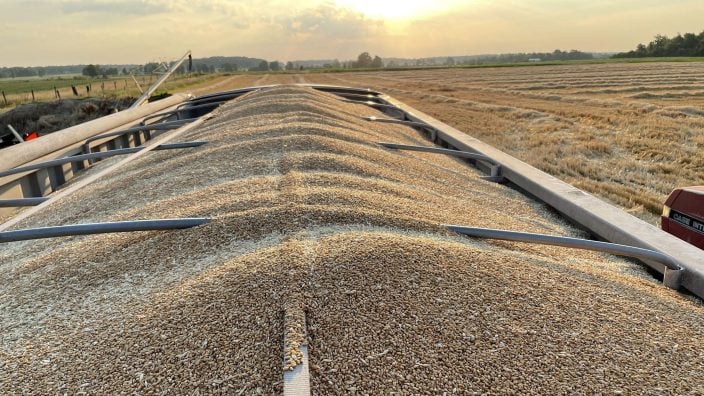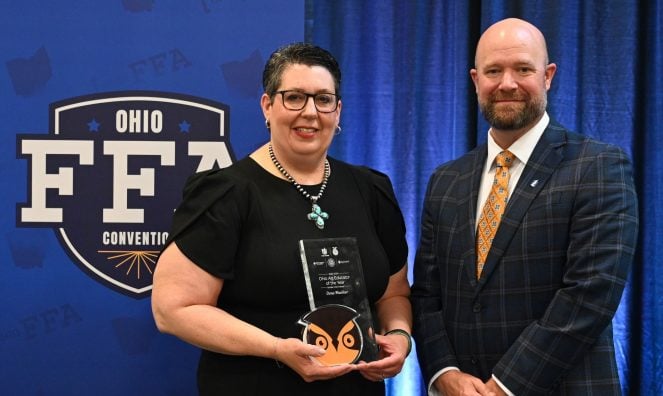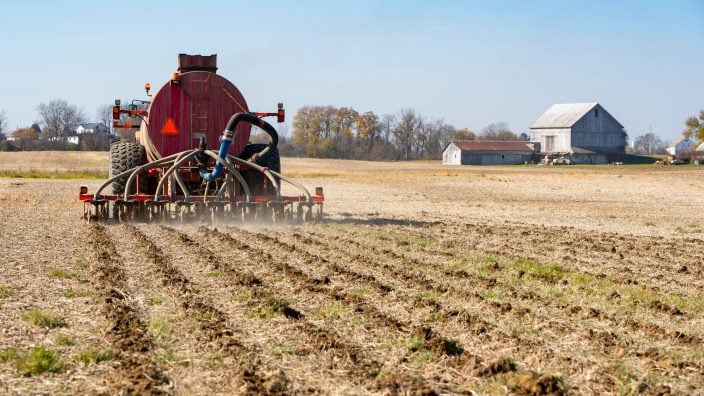Agriculture trade and tariff resources
Ohio Farm Bureau has collected information and resources that will be updated as the trade and tariff situation continues to unfold.
Read MoreOhio has a new budget for fiscal years 2022-2023. The $74 billion budget includes education reform, statewide cuts to personal income taxes, and investments to help keep Ohioans employed and to create more job opportunities across the state. It also checks many other Ohio Farm Bureau priority issues boxes.
“From rural broadband and local meat processing capacity, to funding for H2Ohio, the Ohio Department of Agriculture and Ohio State, lawmakers and Governor DeWine heard from Ohio Farm Bureau and our members and responded to the issues laid out in our Ohio Agriculture and Rural Communities Action Plan with this new budget,” said Adam Sharp, executive vice president of Ohio Farm Bureau. “We appreciate the legislature and the administration for their recognition of the challenges facing Ohio’s farm and food sector and for the action to provide funding to address the concerns of their rural constituents across the state.”
One of the biggest line items in the new biennial budget is $250 million for the Ohio Rural Broadband Expansion grant program, created earlier this year by lawmakers to allow internet service providers to apply for grants that will help fund the infrastructure needed to provide faster internet access to underserved rural Ohio communities.
“This is the largest public investment in broadband we have ever seen in Ohio,” said Jenna Reese, Ohio Farm Bureau’s director of state policy. “Broadband access is essential in rural Ohio for many reasons. Farmers use it to market their products, to keep track of commodity prices and to utilize new precision technology. Rural Ohioans’ quality of life depends on technology, and their need for reliable internet access is critical.”
Gov. Mike DeWine’s H2Ohio initiative, a comprehensive, data-driven water quality plan to reduce harmful algal blooms, improve wastewater infrastructure and prevent lead contamination, received $170 million in the budget – $49.3 million of that will be used to expand the program to 10 additional counties in the Lake Erie Watershed.
The budget also created the Meat Processing Investment grant program and funded it at $10 million to help existing plants in Ohio expand their capacity and fund new construction, including guidelines for reviewing and approving the grants.
“This is specifically for small and medium-sized meat processors in Ohio to start up or expand their operation,” said Brandon Kern, senior director of state and national policy for Ohio Farm Bureau. “The goal is to increase meat and poultry processing capacity in Ohio to make our food system more resilient for farmers and consumers.”
DeWine signed the budget into law July 1.


Ohio Farm Bureau has collected information and resources that will be updated as the trade and tariff situation continues to unfold.
Read More

The grants are designed to find creative ways to address challenges facing the agricultural sector today, and generate deeper public understanding of farming and the ways that agriculture impacts our nation and communities.
Read More

Who must pay the CAT tax? What are taxable gross receipts? How and when are CAT taxes due? This article provides a brief overview of Ohio’s Commercial Activity Tax obligations.
Read More

Airable Research Lab focuses 100% on developing safe, sustainable products made from the soybean oil grown right here in the Buckeye State.
Read More

SB 100, championed by Sen. Susan Manchester, would offer farm families access to affordable, personalized health care plans.
Read More

Ohio Farm Bureau policy regarding highways and motor vehicle fuels tax guided OFBF’s board in its decision to support the passage of Issue 2.
Read More

March is National Agriculture Month and in today’s world, agricultural education and awareness is needed more than ever. Hear from two of Ohio’s top ag educators.
Read More

Brent Nemeth of Rayland/Dillonvale will serve members in Carroll, Harrison, Jefferson and Tuscarawas counties.
Read More

Current Agricultural Use Value is often discussed as a farmland preservation tool, but there are some other tools in the law that landowners can consider.
Read More

Trevor Kirkpatrick will help design, coordinate and implement member-focused health benefits programs.
Read More